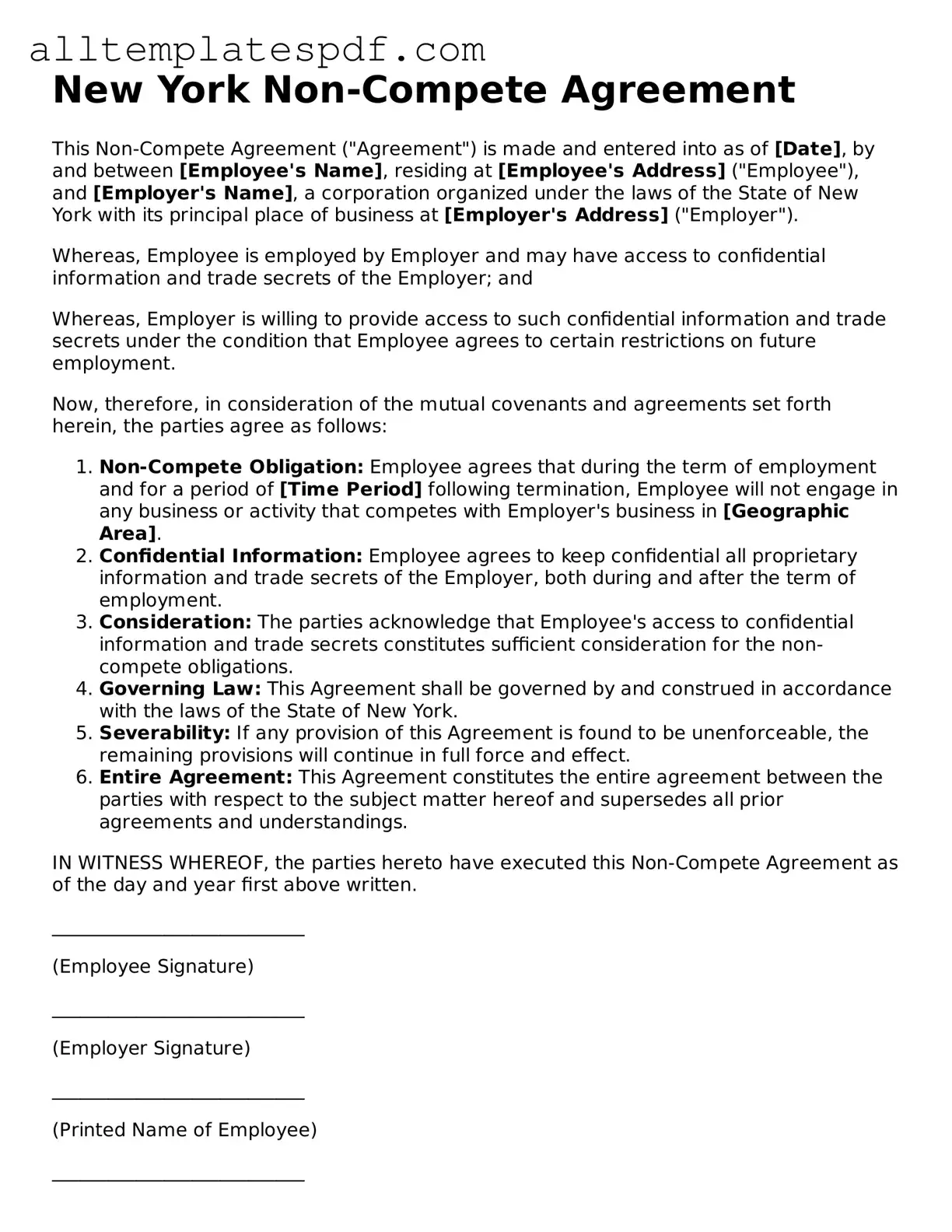When filling out the New York Non-compete Agreement form, many individuals unknowingly make mistakes that can have significant consequences. One common error is failing to read the entire document thoroughly. Skimming through the agreement may lead to misunderstandings about the terms and conditions. It’s crucial to understand what you are agreeing to before signing.
Another mistake is not seeking legal advice. Many people assume they can navigate the complexities of a non-compete agreement on their own. However, consulting with a legal professional can provide clarity and ensure that your rights are protected. Ignoring this step can result in unintended restrictions on your future employment.
Some individuals overlook the importance of specifying the geographic scope of the non-compete. A vague description can lead to confusion and potential enforcement issues later. Clearly defining the areas where the non-compete applies is essential to avoid excessive limitations on your career opportunities.
Additionally, failing to negotiate terms can be a significant oversight. Many people accept the initial terms without realizing they have the right to negotiate. This can lead to overly restrictive clauses that limit your ability to work in your field. Don’t hesitate to advocate for yourself and seek a fair agreement.
Another frequent mistake is not considering the duration of the non-compete. Some individuals may agree to terms that are too lengthy, which can hinder their career progression. It’s important to assess whether the time frame is reasonable and aligns with industry standards.
Moreover, individuals often forget to document any agreements made during negotiations. If verbal agreements are not recorded in writing, they may not hold up in court. Ensure that any changes or clarifications are included in the final document to protect your interests.
Finally, failing to understand the implications of violating the agreement can lead to dire consequences. Many people do not fully grasp the legal ramifications of breaching a non-compete. This lack of understanding can result in costly legal battles or damage to one’s professional reputation. Take the time to comprehend what you are signing to avoid these pitfalls.
